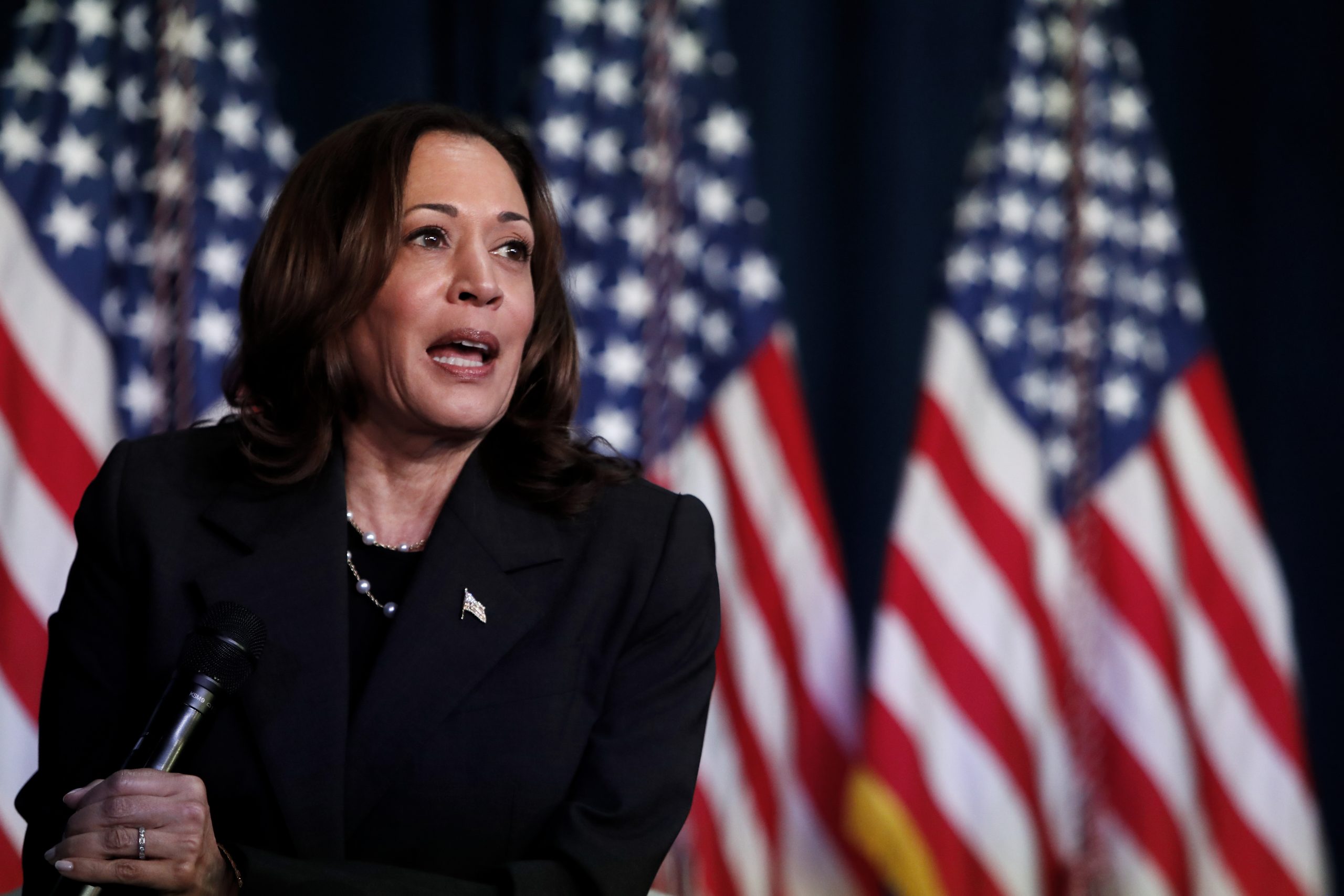
This past week provided a significant indication of Vice President Kamala Harris’s strengthened position atop the Democratic ticket, evidenced by the presence of numerous Senate candidates at the party’s convention in Chicago.
Although the three most vulnerable senators did not attend the Democratic National Convention, nominees from Michigan, Arizona, Pennsylvania, Wisconsin, Maryland, and Texas made appearances, many of them sharing the stage with Harris.
Harris’s influence has bolstered President Joe Biden’s standing in several states, putting Nevada and Arizona back in contention. However, the key Senate races that will determine control of the chamber remain largely unchanged. While Democrats were outperforming Biden when he was the nominee, they continue to do so under Harris’s leadership.
Despite this, Democrats face a challenging election map this year, defending seats in states that former President Donald Trump won by substantial margins, as well as in battleground states he narrowly lost in 2020. If Republicans secure West Virginia, where Senator Joe Manchin is retiring, they would only need to win the White House or one additional Senate seat to claim the majority.
Beneath the overall trend of Democratic overperformance, there are noticeable shifts in certain races, prompting changes in the ranking of Senate seats most likely to flip. This ranking is based on CNN’s reporting, along with fundraising, polling, and spending data.
The top three states likely to change hands—West Virginia, Montana, and Ohio—remain constant. The next most vulnerable seats are open ones where Democrats are on defense: Michigan and Arizona. Defending open seats is generally more challenging, partly because candidates lack the established brand of incumbents to withstand national headwinds. These two states have now overtaken Nevada, where Senator Jacky Rosen is seeking a second term.
While Harris has gained momentum in recent weeks and may see a post-convention polling bump, the road to November is still long. The upcoming September 10 debate against Trump and the promise of a one-on-one interview could significantly impact the 2024 race.
At the Senate level, as voters begin to pay more attention to the election heading into the traditional post-Labor Day campaign season, and as Republican spending ramps up, both parties expect tightening numbers in their races. Democrats have only one potential pickup on the list (Texas), while Republicans are optimistic about expanding the map into New Mexico, which has not yet been included.
The rankings below offer a snapshot of the current Senate race landscape, subject to change as the election season progresses:
- West Virginia: West Virginia remains the seat most likely to flip. Without Senator Joe Manchin running for reelection, Republican Governor Jim Justice is well-positioned to win in a state Trump is expected to carry by a significant margin.
- Montana: Senator Jon Tester is the most endangered Democrat running for reelection. In a state Trump won by large margins, Tester will need to outperform Harris by double digits, a tall order given that this is the first time he’s on the ballot alongside Trump.
- Ohio: Senator Sherrod Brown, known for his progressive populism, is another vulnerable Democrat running for reelection in a Trump state. While Brown has managed to maintain a lead, his race against Republican Bernie Moreno is expected to tighten as the election approaches.
- Michigan: The open seat left by retiring Senator Debbie Stabenow has moved up in the rankings. Democratic Representative Elissa Slotkin faces a challenging race against Republican Mike Rogers, with both candidates emphasizing their national security credentials.
- Arizona: Arizona remains a critical battleground with an open Senate seat. Democrat Ruben Gallego is running against Republican Kari Lake, a Trump ally who has remained controversial. The race is expected to be tight, with Gallego needing to appeal to a broad range of voters.
- Nevada: Senator Jacky Rosen’s race has dropped in the rankings due to Harris’s improved standing. Rosen faces Republican Sam Brown, an Army veteran who has gained traction in the state.
- Pennsylvania: Senator Bob Casey, a well-known incumbent, remains in a competitive race against Republican Dave McCormick. Casey has maintained a lead, but McCormick’s campaign is expected to gain momentum as the election nears.
- Wisconsin: Senator Tammy Baldwin is facing her most competitive reelection yet. She is up against Republican Eric Hovde, who has invested heavily in his campaign. Baldwin’s strong incumbent status has kept her in a favorable position so far.
- Texas: Texas represents the only Democratic offensive opportunity on this list. Representative Colin Allred is challenging Republican Senator Ted Cruz in what remains a longshot race. However, Allred’s campaign has generated significant interest and support.
- Maryland: The enthusiasm for Harris has boosted the campaign of Angela Alsobrooks, who is running to replace retiring Senator Ben Cardin. While Maryland is a solidly Democratic state, the race has drawn attention due to the candidacy of former Republican Governor Larry Hogan.